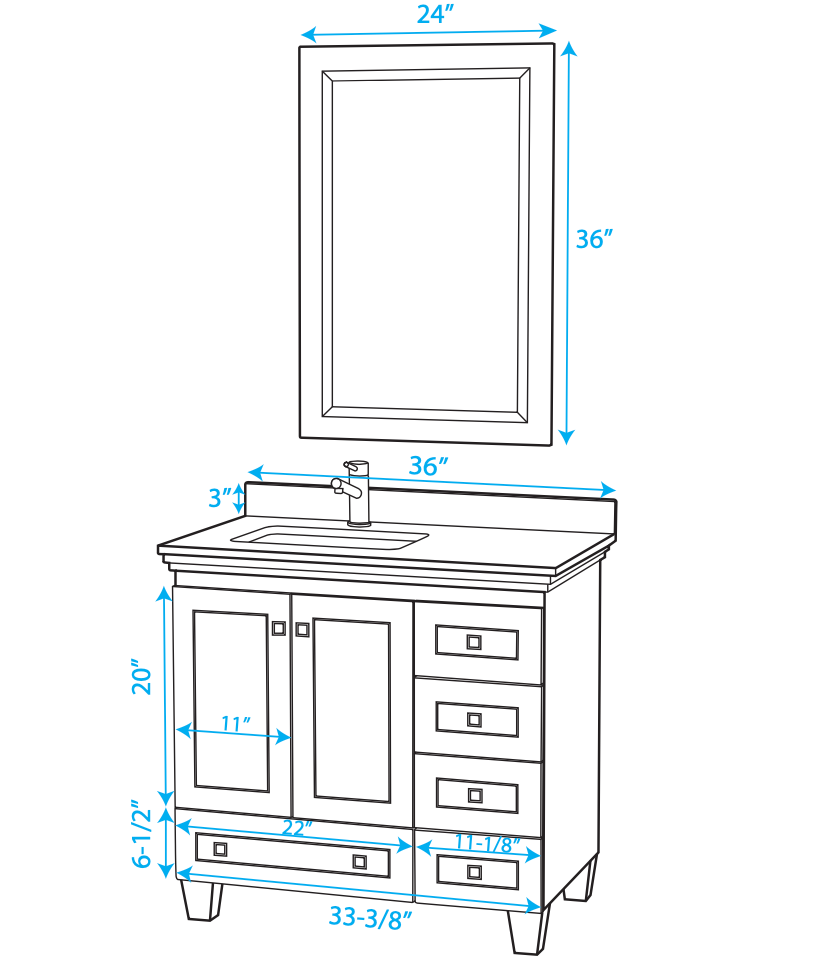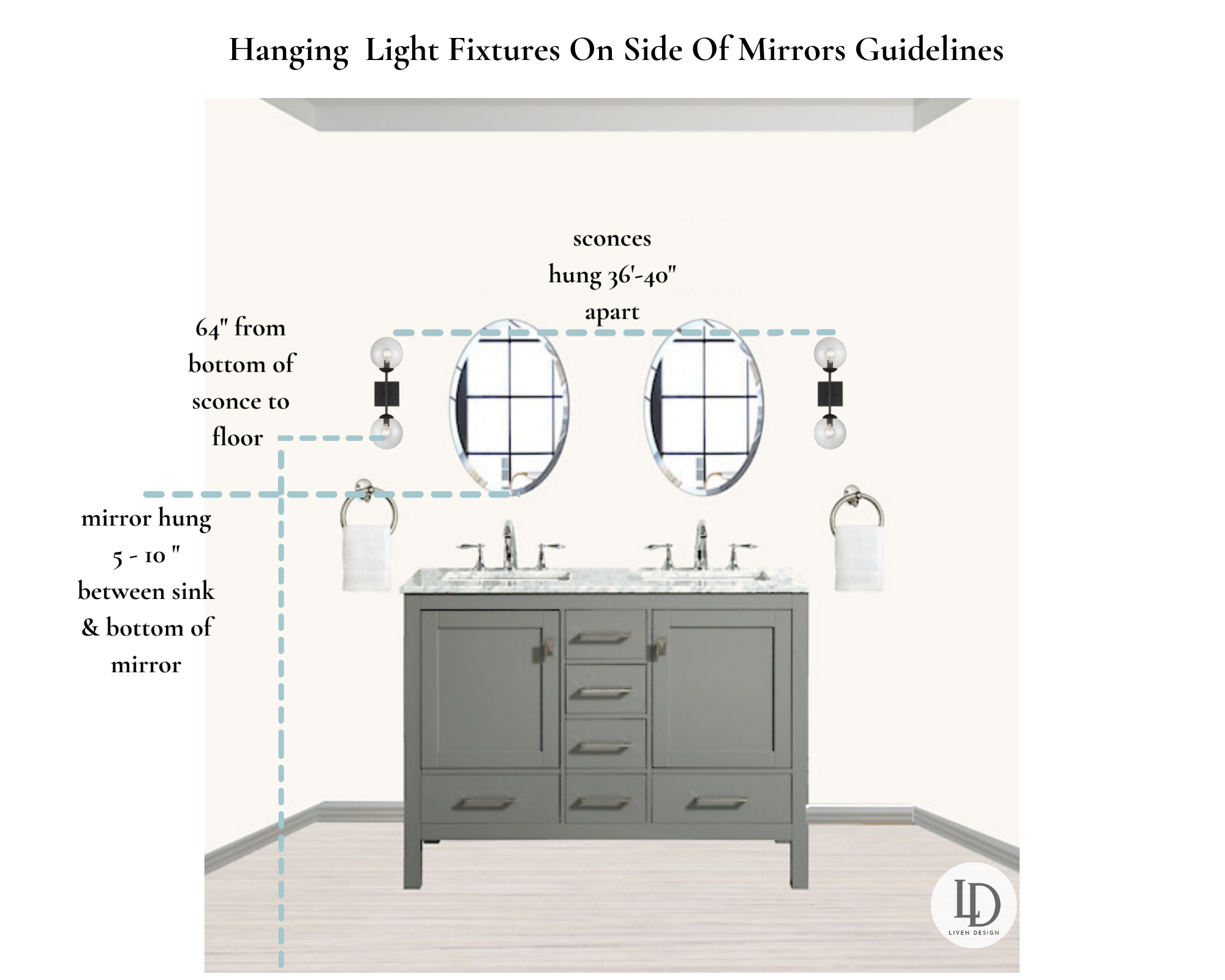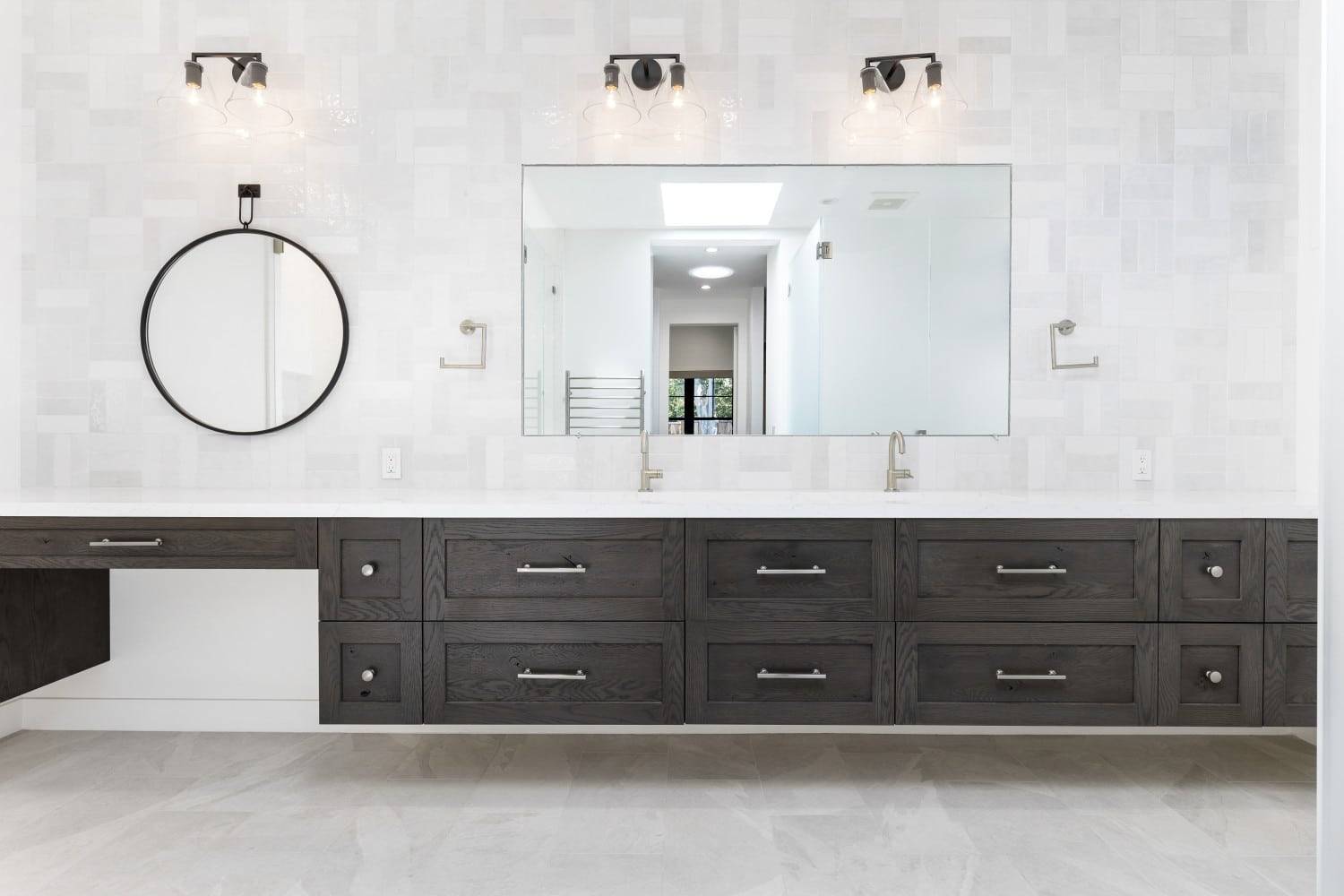The Ideal Height for Vanity: A Guide to Enhancing Your Bathroom Experience
Related Articles: The Ideal Height for Vanity: A Guide to Enhancing Your Bathroom Experience
Introduction
With enthusiasm, let’s navigate through the intriguing topic related to The Ideal Height for Vanity: A Guide to Enhancing Your Bathroom Experience. Let’s weave interesting information and offer fresh perspectives to the readers.
Table of Content
The Ideal Height for Vanity: A Guide to Enhancing Your Bathroom Experience

The vanity, a staple in any bathroom, serves as a functional and stylish centerpiece. More than just a storage solution, it sets the tone for the entire space, influencing both its aesthetic appeal and practical functionality. Choosing the right vanity height is crucial to ensuring comfort, ease of use, and an overall harmonious bathroom environment.
Factors Influencing Vanity Height
The ideal vanity height is not a one-size-fits-all proposition. Several factors come into play, including:
- Personal Height: The most significant factor is the height of the individual using the vanity. A vanity that is too high can strain the back and neck, while a vanity that is too low can lead to discomfort and difficulty reaching the sink.
- Sink Depth: The depth of the sink influences the overall height of the vanity. Deeper sinks often require a taller vanity to accommodate the bowl’s depth, while shallower sinks allow for lower vanity heights.
- Countertop Thickness: The thickness of the countertop impacts the overall height of the vanity. Thicker countertops necessitate a taller vanity to achieve the desired height.
- Cabinet Style: The style of the vanity cabinet, particularly its base design, can affect the overall height. Traditional cabinets often have more substantial bases, contributing to a higher overall height.
The Standard Vanity Height
While there is no definitive "normal" height for vanities, a standard range exists to ensure comfort and functionality for the majority of individuals. The standard vanity height is generally between 34 and 36 inches. This range accommodates most people comfortably, providing a balanced height for both sink access and overall ergonomic use.
Benefits of an Ideal Vanity Height
- Ergonomic Comfort: An appropriately sized vanity allows for comfortable use, minimizing strain on the back, neck, and shoulders. This is particularly important for individuals who spend significant time in their bathrooms, such as those who apply makeup or shave regularly.
- Enhanced Accessibility: A vanity at the right height ensures easy access to the sink, allowing for effortless brushing, washing, and other activities. This is especially crucial for individuals with mobility issues or those who prefer a more comfortable experience.
- Improved Functionality: A well-positioned vanity encourages efficient use of the bathroom space. It allows for easy access to storage compartments and facilitates smooth movement around the bathroom, maximizing its functionality.
- Aesthetic Harmony: An appropriately sized vanity complements the overall design of the bathroom, creating a balanced and visually appealing space.
Tips for Choosing the Right Vanity Height
- Consider Your Height: The most important factor is your own height. A general rule of thumb is to choose a vanity height that allows your elbows to be comfortably bent at a 90-degree angle while standing at the sink.
- Account for Sink Depth: Factor in the depth of the sink when choosing the vanity height. Deeper sinks will require a taller vanity to accommodate the bowl.
- Measure Your Countertop: The thickness of the countertop will influence the overall height of the vanity. Ensure you factor in the countertop thickness when selecting the vanity height.
- Seek Professional Advice: If you are unsure about the ideal vanity height for your bathroom, consult with a professional designer or contractor. They can provide expert advice based on your specific needs and preferences.
FAQs about Vanity Height
- What is the average vanity height? The average vanity height is between 34 and 36 inches.
- Is there a standard vanity height for different bathroom types? While a standard range exists, the ideal height can vary depending on the specific bathroom layout and individual preferences.
- How do I measure the right vanity height for my bathroom? Measure the distance from the floor to your elbow when standing comfortably at the sink. This will provide a good starting point for determining the ideal vanity height.
- Can I adjust the height of my vanity? Some vanities offer adjustable legs or feet, allowing you to fine-tune the height to suit your needs. However, it’s important to consult the manufacturer’s instructions before making any adjustments.
- What are the disadvantages of a vanity that is too high or too low? A vanity that is too high can cause strain on the back and neck, while a vanity that is too low can lead to discomfort and difficulty reaching the sink.
Conclusion
Choosing the right vanity height is crucial for creating a comfortable, functional, and aesthetically pleasing bathroom environment. By considering factors such as personal height, sink depth, countertop thickness, and cabinet style, you can select a vanity that meets your individual needs and preferences. A well-positioned vanity enhances the overall bathroom experience, fostering a sense of comfort, ease of use, and aesthetic harmony.

![]()




![What Is the Standard Bathroom Vanity Height? [Size Guide]](https://cdn.kitchencabinetkings.com/media/siege/bathroom-vanity-height/bathroom-vanity-heights-comparison-chart.webp)
Closure
Thus, we hope this article has provided valuable insights into The Ideal Height for Vanity: A Guide to Enhancing Your Bathroom Experience. We hope you find this article informative and beneficial. See you in our next article!